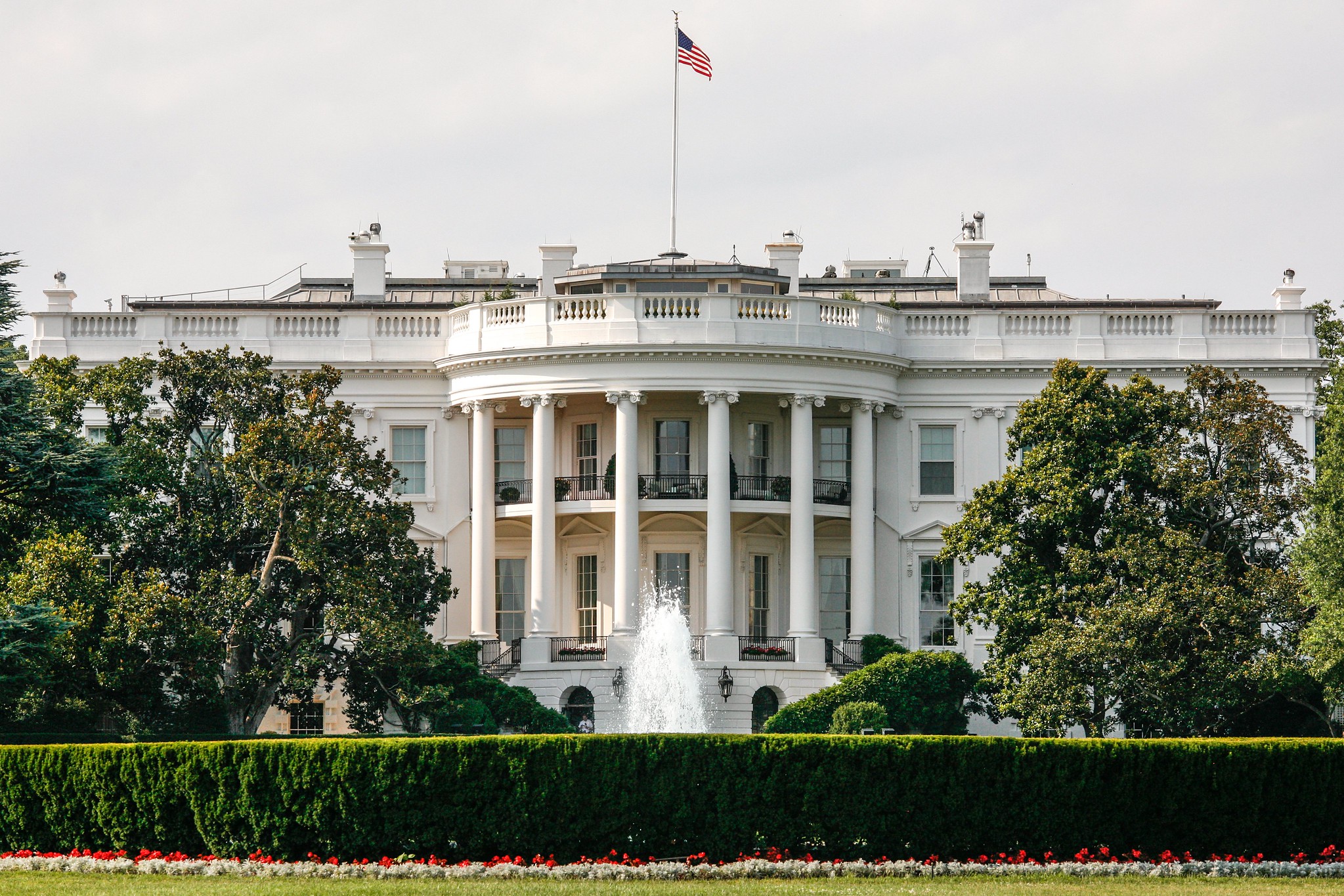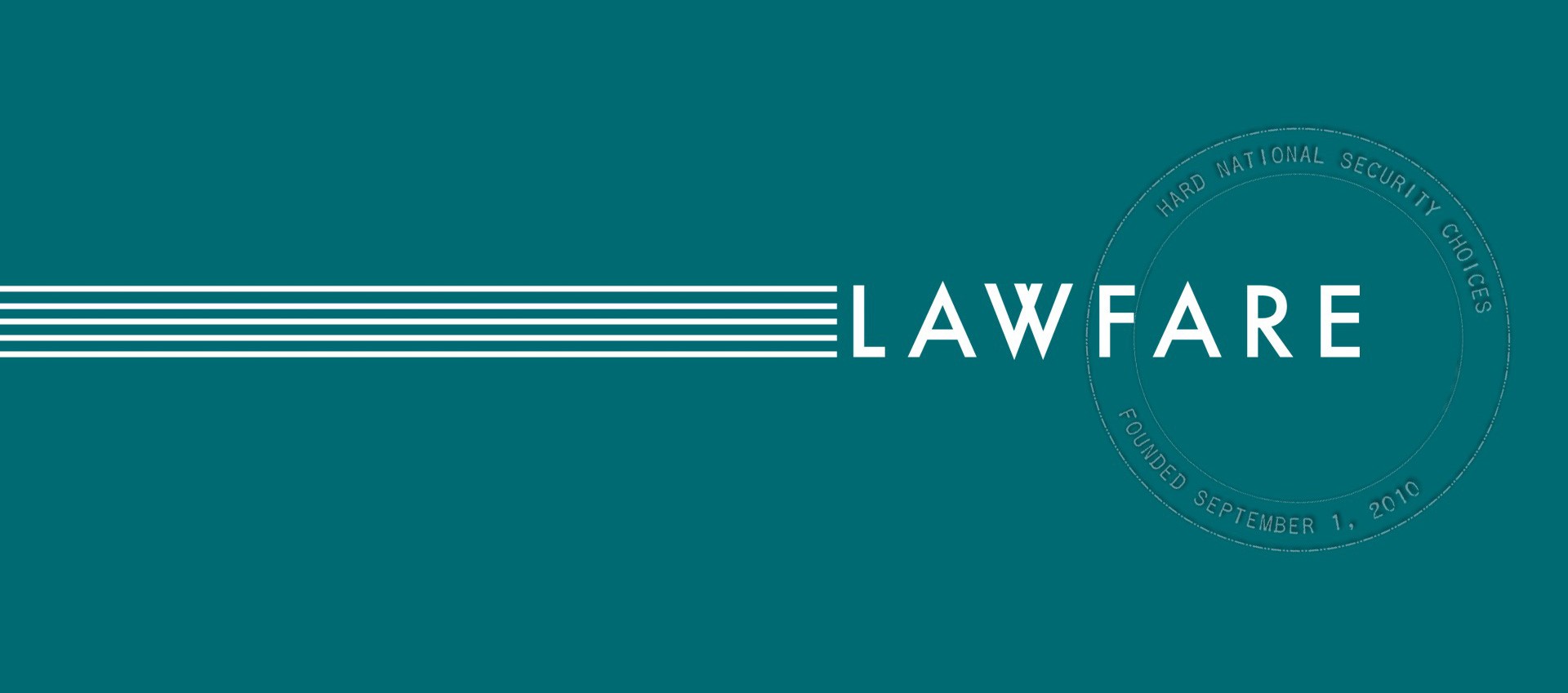Specters of Fear and Executive Power
A review of David M. Driesen, “The Specter of Dictatorship: Judicial Enabling of Presidential Power” (Stanford University Press, 2021).

Published by The Lawfare Institute
in Cooperation With

A review of David M. Driesen, “The Specter of Dictatorship: Judicial Enabling of Presidential Power” (Stanford University Press, 2021).
***
A “specter,” according to Merriam-Webster, is “a visible disembodied spirit, a ghost; something that haunts or perturbs the mind, a phantasm.” David Driesen’s “The Specter of Dictatorship” is a book about fear in politics. Driesen offers three main arguments about the relationship between fear of dictatorship and the separation of powers. First, the Founders’ fear of tyranny was a foundational purpose for the Constitution and that the Supreme Court has misunderstood this original meaning as it has expanded presidential power and embraced the unitary executive theory. Second, he focuses on modern experiences with European tyranny (from the Nazis to the rise of 21st century European authoritarianism) to highlight the dangers of powerful chief executives and their ability to exploit public fear to concentrate power. Finally, drawing on this history he offers a series of important doctrinal recommendations to restore checks and balances.
A strength of the book is how it focuses on the constructive power of fear in the public’s constitutional imagination (fear of kings and authoritarians) and also its destructive power (the authoritarian playbook to prey on the public’s fear of minorities, outsiders and terrorists). But the book’s study of fear is also sometimes a weakness, as Driesen emphasizes one side’s fears as legitimate, while overlooking or dismissing the other side’s fears as illegitimate. The separation-of-powers formalism that underlies unitary executive theories is motivated by an understandable fear of concentrated power—of populist faction or party fervor, which could take over Congress and eliminate checks and balances. At times, Driesen inadvertently also validates another of their legitimate fears: that critics of presidential power do not take national security seriously enough. Conversely, his book is sometimes too generous to the unitary theorists in terms of the validity of their historical and constitutional interpretation. I suggest that their misinterpretation of the Founding arises from a parallel set of fears and ideologies.
The unitary executive theory is the interpretation that the Constitution gives executive power exclusively to the president, beyond the checks and balances of Congress or the courts—that is, the president’s powers are unconditional and “indefeasible.” Driesen’s first chapter illustrates that the Framers fundamentally feared the specter of tyranny (and the scepter of monarchy, as I have noted of their anti-royalism), and thus they did not support the strong versions of presidential power in vogue today. The next several chapters trace out the development of the unitary executive to the present day. Chapter 2 traces the rise of the executive branch’s power, as manifested both in increasing presidential power and in the emergence of independent agencies, and is an excellent resource for readers looking for a concise history and critique of the unitary executive narrative. Chapters 3 and 4 demonstrate how courts have been too deferential to presidents and too hostile to Congress’s role in checks and balances. These chapters and the closing chapter offer some incisive critiques and vital recommendations, especially on the problems of standing and the political question doctrine, the problem of a super-strong clear statement rule for legislation limiting presidential power, the importance of courts interrogating executive “bad faith,” and protecting voting rights.
The book’s most important contributions are in Chapters 5, “The Specter of Dictatorship: Poland, Hungary, and Turkey,” and 6, “Parallels to America’s Democratic Erosion.” The chapter on European autocracy nicely summarizes the recent work of Kim Scheppele, Tom Ginsburg and Aziz Huq, Steven Levitsky and Daniel Ziblatt, and others, and presents a helpful synthesis applied to Trump in the next chapter. Driesen powerfully takes the fear of tyranny out of a distant, abstract past and brings it to the modern day, with the concrete examples of Viktor Orban’s Hungary, Jaroslaw Kaczynski’s Poland and Recep Tayyip Erdogan’s Turkey. Each dictator is a case study of the road to authoritarianism and a parallel to the Trump era: A central leader undermines democratic norms, plays “constitutional hardball” (though “constitutional beanball” may be more apt), limits the press and free speech, undermines judicial independence and the rule of law, tilts or rigs elections, exploits emergency powers, demonizes the media and minorities, and abuses prosecutorial powers to investigate or imprison opponents. The authoritarian playbook is clear and concrete, which makes The Specter all the more haunting.
However, Driesen’s three specters are not all the same model of a head of state abusing concentrated executive power; one of his examples may actually be a counterexample that supports the unitary theorists’ fears. He acknowledges that in Poland, Kaczynski is not the chief executive, but is head of the Law and Justice Party and “the de facto head of state.” The prime minister and president are Kaczynski’s “puppets”: “Kaczynski controls [the party], which controls Parliament. While Kaczynski and his supporters vilify Russian communism, Kaczynski’s government follows the communist model of autocracy based on having a head of a political party control the government.”
A unitary theorist probably would say that this party-boss specter, whether Soviet, fascist, or modern-day Polish authoritarian, is why their model of strict separation is important: A party boss might take over a parliamentary system, but it is harder for a party head to consolidate power over three separate branches. The unitary model strengthens a president’s ability to check the other branches, and those strong checks and balances protect liberty.
The larger point is that the opponents of the unitary theory do not have a monopoly on democracy and liberty—or for that matter on the insights of the Founding. Unitary theorists hold that the strict separation of powers will prevent tyranny, because, as Madison wrote in Federalist #51, “Ambition must be made to counteract ambition.” In the canonical unitary precedent Myers, Chief Justice (and former President) William Howard Taft quoted Madison again: “Vest this power in the Senate jointly with the President, and you abolish at once that great principle of unity and responsibility in the executive department, which was intended for the security of liberty and the public good.” More recent precedents (Bowsher, Free Enterprise, Seila Law) cited another part of Federalist #51: “[T]he Framers recognized that, in the long term, structural protections against abuse of power were critical to preserving liberty,” as Chief Justice John Roberts summarized in Free Enterprise. And in Seila Law, Roberts wrote about the problem of an agency with a single powerful head: “Aside from the sole exception of the Presidency, that structure scrupulously avoids concentrating power in the hands of any single individual. … The Framers did not rest our liberties on such bureaucratic minutiae” but instead established formal separation of powers. Justices Anthony Kennedy, Clarence Thomas, Neil Gorsuch and Brett Kavanaugh have similarly explained how the separation of powers protects liberty.
The risk of tyranny is not just from party heads consolidating power over a parliamentary system. The unitary theorists can cite examples of executive officials wielding too much independent power, from rogue prosecutors overzealously pursuing cases to ambitious attorney generals and FBI heads with their own agendas cracking down on immigrants and civil liberties, especially in much of the 20th century. The Japanese internment originated from effectively independent military and civilian officers (including elected non-unitary executive officials like the ambitious California attorney general Earl Warren) without being initiated by a president, and it is plausible that such ambitious independent prosecutors-politicians have played a major role in driving mass incarceration.
There is also a section of Driesen’s book that is likely to confirm the concerns about legal and bureaucratic elites being out of touch with public opinion. Driesen has a long section where he contrasts the 9/11 attacks, which killed 3,000 people, with the threat of climate change, which he argues “will surely cause much greater destruction,” and suggests that “national security” distorts the public’s assessment of risk. Driesen, who teaches environmental law, has a point, but he takes it too far: “But why do attacks killing three thousand people harm national security instead of just constitute a horrific crime? It cannot be said that the possibility of losing three thousand lives in and of itself constitutes a threat to national security.” Driesen goes on to argue that terrorism’s threat to “national security in the true sense” is its “triggering overreaction by the government.” This lack of sensitivity to what actually happened and what came so close to happening on 9/11 is an example of why unitary executive proponents may have concerns about a bureaucracy of legal elites.
These fears of executive tyranny—of party bosses, non-unitary executive officials, and bureaucratic overreach—are valid, even if others have wildly exaggerated the “deep state” threat, and it is important to recognize that the separation of powers was a transformational achievement of the Framers as a hedge against 18th-century models of tyranny. Driesen is right that the last 100 years have shown that concerns about more modern models of tyranny require an update. But on the flip side of being too dismissive of unitary concerns about liberty, he was also too generous to their originalist and textual arguments. His introduction to the Founding makes too modest a critique of the unitary theory, “that not all of the evidence is on one side of the debate.” Given what Driesen shows and summarizes of others’ work in the chapter, he should have been more clear: The unitary theory of indefeasible presidential powers is not supported by the unitary historical scholarship.
Driesen provides sufficient evidence from the recent work by Julian Mortensen, Curtis Bradley, Martin Flaherty, Peter Shane, Ethan Leib, Andrew Kent and myself to offer a stronger conclusion that the unitary theory has not met the burden of a Founding consensus of original public meaning. Emerging scholars Jane Manners, Lev Menand, Daniel Birk and Christine Kexel Chabot have offered a new challenge to the unitary account of English and American law of offices. And in the past two years, I have found more serious misuses of sources by unitary scholars in an amicus brief to the Supreme Court in the key Seila Law case and in some of their award-winning books and articles, including misquoting Blackstone (whose “Commentaries of the Laws of the England” was a Founders’ key source on the common law), more generally misusing Blackstone, and repeatedly mischaracterizing sources from the ostensible “Decision of 1789” (the incorrect claim that the First Congress “decided” that Article II of the Constitution implied the power of presidential removal). I have been asking some of these scholars for months to address these concerns. Two of these scholars recently stepped up to acknowledge two of these errors, but they were too dismissive of the errors’ significance, and they and their co-authors have not responded to the other critiques. The more serious errors on the Decision of 1789 need to be addressed. An irony of the unitary theory’s emphasis on “democratic accountability” is the lack of accountability from these theorists for their serious and repeated historical errors.
The amount of mistakes and misuse of Founding era sources raise the question: If the historical support for the unitary executive theory is strong, why would these scholars need to dig and dig so deep until all they could rely on was, at best, a series of implausible stretches and, even being generous, their remarkable number of coincidental mistakes? If “executive power” was so clearly broad as to include a general removal power, why can’t they find any statements in Blackstone or other English sources to that effect, and why instead misinterpret other parts of Blackstone and misleading citations to other historical sources? If presidential power is “indefeasible,” why did the Framers use that word in early debates for rights but not presidential powers, and why is there no evidence that “vesting” meant granting “indefeasible” or unconditional powers? How could the Take Care Clause—requiring the president to ensure “that the laws be faithfully executed”—translate into unlimited presidential discretion if its original public meaning was to limit the discretion of nonroyal executive officials? If the First Congress endorsed the unitary theory, why did only one-third of the House support it, and why did unitary theorists have to overlook and misread so many sources to suggest otherwise?
I think it is important to go back to an earlier observation: These separation-of-powers formalists have a good-faith theory of liberty. But these liberty concerns lead them to overread the historical record and get it wrong. As I have observed previously, there is the puzzle: Why would American conservatives, who spent decades arguing for federalism and against the dangers of centralized national control, turn around in the 1980s and argue for more centralized national control under a bolder unitary theory than had ever been suggested before? Ashraf Ahmed, Lev Menand and Noah Rosenblum persuasively suggest that a policy of economic deregulation under a powerful national executive played an important role in this transition.
But I think that the unitary executive emerged earlier, in the years between the Nixon Watergate investigation and the election of President Reagan. For example, one sees the now common stretching of the constitutional sources in defense of presidential power in Nixon’s Watergate briefs against Congress. Soon after, Antonin Scalia became the head of the Office of Legal Counsel under President Ford. Here, his record on presidential power was mixed, but he emerged during the Reagan era, along with Edwin Meese and Robert Bork, as part of a turn toward originalism and a unitary executive theory.
Beyond economic regulation, two ideological sources motivated the conservative embrace of the unitary executive: the Cold War and the Culture Wars. Cold warriors wanted to ensure a strong commander in chief, and their religious-right allies relied on a theory of “presidential representation” for the “silent majority” to prevail over secular and pro-regulation Beltway elites (that is, Nixon/Agnew’s “nattering nabobs of negativism,” or the more recent references to the “swamp” and the “deep state”).
Once we have a better understanding of both the 1780s and the 1980s, we can understand the unitary executive theory for what it is: a good-faith, but fundamentally faith-based, ahistorical, non-originalist, ideological “living constitutionalist” argument for the modern imperial presidency. It’s really an “Article II of faith.”



